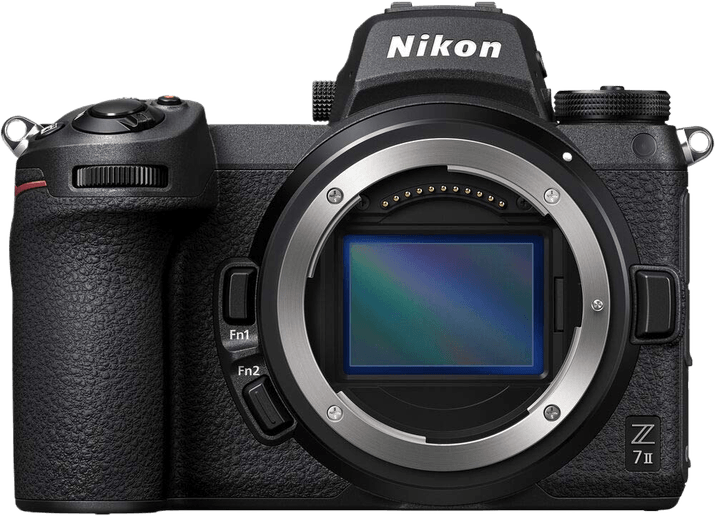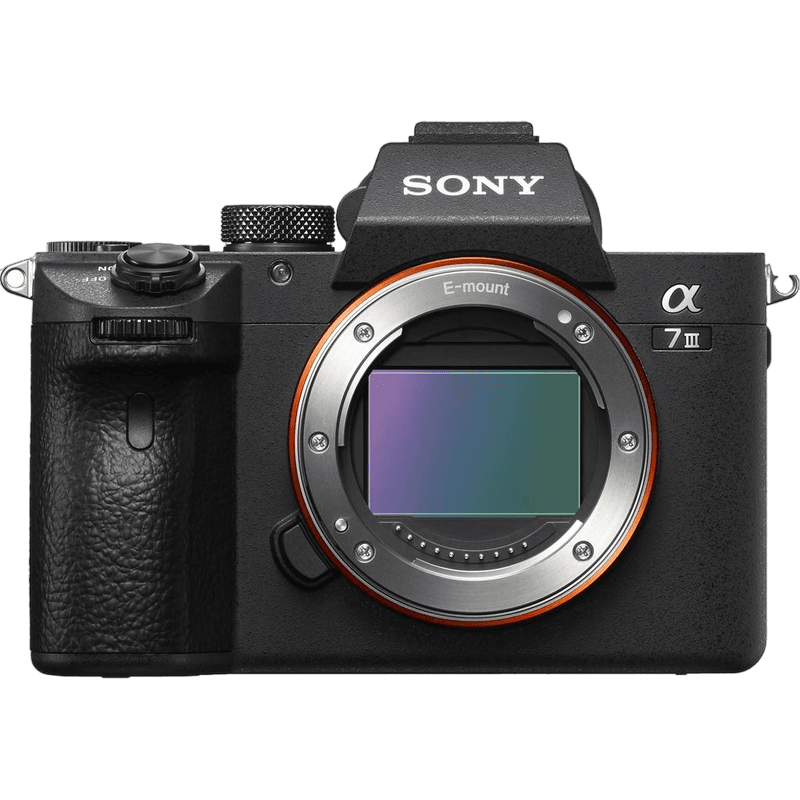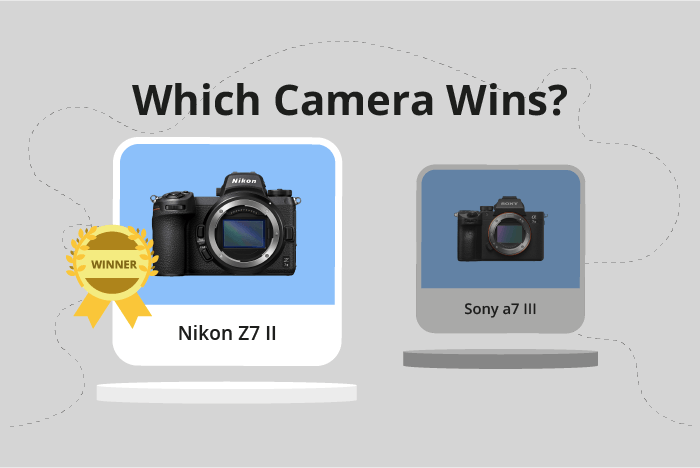Nikon Z7 II vs Sony a7 III Comparison
Nikon Z7 II

Sony a7 III

The Nikon Z7 II outperforms the Sony a7 III with a score of 85 compared to 81. Both mirrorless cameras share similarities, such as their launch prices of $3399 and $2000, respectively. Additionally, their sizes are quite comparable, with the Nikon Z7 II measuring 134 x 101 x 70mm and the Sony a7 III at 127 x 96 x 74mm.
The Nikon Z7 II excels with its higher score, indicating a better overall camera. This camera’s advantages include its more recent release year of 2020, compared to the Sony a7 III’s 2018 release. However, the Sony a7 III has a lighter weight of 650g, making it more portable than the 705g Nikon Z7 II.
While both cameras offer excellent performance and features, the Nikon Z7 II comes out on top due to its higher score and more recent release. The Sony a7 III, though, remains a strong contender with its lighter weight and lower price point.
Nikon Z7 II vs Sony a7 III Overview and Optics
The Nikon Z7 II outperforms the Sony a7 III in terms of optics, scoring 86/100 compared to 81/100. Both cameras share several common specifications, such as a 10 fps shooting speed, CMOS sensor type, full-frame sensor size, and image stabilization. They also have different lens mounts, with the Nikon Z7 II using the Nikon Z mount and the Sony a7 III using the Sony FE mount.
The Nikon Z7 II has a clear advantage in the megapixel department, with 45.75 compared to the Sony a7 III’s 24.2, allowing for higher resolution images. Additionally, the Nikon Z7 II features a dual Expeed 6 processor, which contributes to faster image processing and improved performance. Its DXOMARK sensor score of 100 further emphasizes the Nikon Z7 II’s superiority in image quality.
Although the Sony a7 III falls short in some aspects, it still has a respectable DXOMARK sensor score of 96, ensuring good image quality. The Bionz X processor in the Sony a7 III also contributes to efficient image processing. However, it is essential to note that it has fewer megapixels and a lower sensor score compared to the Nikon Z7 II.
Taking these factors into consideration, the Nikon Z7 II proves to be the superior choice in terms of optics with its higher megapixel count, dual Expeed 6 processor, and better DXOMARK sensor score. While the Sony a7 III remains a strong contender, it does not surpass the Nikon Z7 II in this specific aspect.
Nikon Z7 II vs Sony a7 III Video Performance
The Nikon Z7 II outperforms the Sony a7 III in video capabilities with a score of 91/100 compared to the Sony’s 70. Both cameras share the same max video resolution of 4K and max video dimensions of 3840 x 2160. However, the differences in their video performance become clear when examining other specifications.
The Nikon Z7 II boasts a higher max video frame rate of 120fps, which is significantly superior to the Sony a7 III’s 30fps. This means that the Nikon Z7 II can capture smoother and more detailed slow-motion footage, giving videographers greater flexibility in their projects.
While the Sony a7 III falls short in some areas, it is still a capable camera for video production. Its 4K resolution and max video dimensions are on par with the Nikon Z7 II, ensuring high-quality video output.
Nikon Z7 II vs Sony a7 III Features and Benefits
The Nikon Z7 II outperforms the Sony a7 III in features with a score of 87/100, compared to the Sony’s 81/100. Both cameras share some similar specifications, including a touchscreen, flip screen, WiFi, and Bluetooth connectivity. However, neither camera has GPS functionality.
The Nikon Z7 II has a larger screen size of 3.2 inches compared to the Sony a7 III’s 3-inch screen. Additionally, the Nikon Z7 II boasts a higher screen resolution, with 2,100,000 dots, while the Sony a7 III has a screen resolution of 921,600 dots. These differences contribute to the Nikon Z7 II’s superior display and user experience.
Though the Sony a7 III falls short in some areas, it still offers a solid set of features. It matches the Nikon Z7 II in terms of touchscreen, flip screen, WiFi, and Bluetooth capabilities. However, the Sony a7 III does not surpass the Nikon Z7 II in any specific feature.
Considering the feature scores and specifications, the Nikon Z7 II is the better camera in terms of features. The larger screen size and higher screen resolution provide a more enjoyable user experience. Although the Sony a7 III is a competent camera with a decent set of features, it does not outshine the Nikon Z7 II in any particular aspect. Buyers seeking a camera with superior features should opt for the Nikon Z7 II, while those satisfied with a solid, reliable camera can consider the Sony a7 III.
Nikon Z7 II vs Sony a7 III Storage and Battery
The Nikon Z7 II and the Sony a7 III both have two memory card slots, but the Nikon Z7 II accepts SD, CFexpress Type B / XQD (UHS-II compatible) cards, whereas the Sony a7 III uses SD / SDHC / SDXC, Memory Stick Duo / Pro Duo / Pro-HG Duo cards.
The Sony a7 III surpasses the Nikon Z7 II in battery life, offering 750 shots compared to the Nikon’s 420 shots. This longer battery life makes the Sony a7 III more suitable for extended use without needing frequent battery replacements or recharging. The choice between these two cameras ultimately depends on individual preferences for USB charging and battery life.
Nikon Z7 II vs Sony a7 III – Our Verdict
Are you still undecided about which camera is right for you? Have a look at these popular comparisons that feature the Nikon Z7 II or the Sony a7 III:

